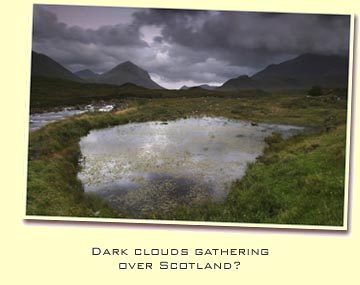By Pit Krause, Germany
 Or: It’s all in the woodworks …
Or: It’s all in the woodworks …
Drinking whisky – may it be for leisure or even semi-professional – is one of the greatest hobbies of all time, no doubt about it. However, some clouds, e.g. in the form of unreal price-policy, decreasing quality and ‘ppm-uniformism’, recently spoil the blue sky for conoisseurs in whisky heaven. Where will the road lead in the industry? There are lots of reasons to be quite concerned:
At the moment, aficionados have already discovered the drop in quality in recent years as a result from the long-lasting whisky boom and its ramifications. Hence many of them are buying older bottlings – and not only from blockbuster distilleries – to receive high quality malts. Of course, it would be unfair and exaggerated to state that there are no good whiskys out there these days, but their number has dropped and their price has risen. Positive examples like Benriach just become too few.
But is this development a problem for newbies? They haven’t encountered the ‘old stuff’ yet (most of them never will) and, therefore, don’t miss it. They have been well-educated by the marketers: gratefully they consume younger and younger malts masked by massive peat or wood finishes, an old wish from the industry that has come true.
It’s about power, not subtle complexity nowadays it seems. Why stack up whiskies in warehouses for decades if they can be sold after five years already and customers are happy. Why select only excellent casks if consumers and independent bottlers buy anyway. The few ‘picky’ connoisseurs do not really make a difference in the balance sheets of multinational conglomerates. That’s why the malts going into blends exceed the quality of some bottled single casks more often nowadays because the blend masters – who remain selective – know their business well.
On the other hand, quality bottlings are slowly being turned into luxury goods with expensive presentations and their own advertising campaign, as the Laddie 40, the Ardbeg 1965 and some old Bowmores and Macallans have shown. They are made to fit the life-styles of the rich and the famous (‘The Envy of Islay’ says it all): I can already picture Diddy on his yacht popping open an Ardbeg 1965 for his entourage. So be it, but it is quite sad that the undoubted quality of these whiskies might not even be recognized by its consumers – which cannot be average malt enthusiasts due to the price. Moreover, such bottlings function as clever marketing tools with tremendous advertising effects. By being flagships for their brands they broaden recognition and help raising prices for the whole product range. Other great aged whiskies below the top range – or not even from the same distilleries – profit from such marketing as well and increase in price. Gladly, this trick doesn’t always work with the aficionados as recent price reductions for bottles like Tobermory 1972 have shown. Now this nice whisky has become attractive again to the normal buyer of fine malts.
Aside from monetary issues, there is more bad news looming.
It is quite sure to suspect, that Single Malt Whisky quality will decrease further: the Bourbon distillers have more and more problems in meeting the worldwide demand for their products. Maturing time of around four years has already been shortened quite a bit and experiments with small casks and woodchips are conducted to produce more Bourbon/Tennessee Whisky in shorter time. Rumour has it that a law is being discussed which would allow Bourbon makers to sell one-year old whiskies in the future – an undertaking which can only work by using small casks. The oak trees used for Bourbon casks used to be around 250 years old in the past, but due to the boom, hundred years of age seem to do nowadays, resulting in drastically higher angel’s share and less character. Bourbon drinkers notice the change already.
Now go figure! The Scottish whisky industry heavily relies on casks from overseas that helped making such beautiful whiskies full of American oak character in the past – and holding the spirit for up to 60 years. Those changes would make the cask management even harder for Scottish distilleries after good Sherry casks have become rare and expensive. Consequently, the distilleries are ‘forced’ to use more wine casks and Bruichladdich/Murray McDavid, Edradour/Signatory and Arran pave the way on this track.
Only time will show if such wine casks can stand the the test of time and the palates.
For the distillers, the wine casks bear more chances. Not only are these barrels cheap and available in abundance.
They can even help in gaining new customers among the wine drinkers (and vice versa) who may recognize a GAJA- or Yquem-finished whisky by the brand name and become curious. Maltmaniac Olivier should be able to get rid of some barriques and make a buck or two. I can imagine a Gewürztraminer-Finish in a Zind-Humbrecht cask quite easily if the malt is not too rigid.
But to be honest, I’d rather have the excellent wine… .
How to react to such news as a sucker for great whiskies?
The answer to this question is easy and can be found in the development of prices in the rarities’ segment. These prices however – in opposition to some recent releases – make sense to me! So is it worth seeking old 75cl-whiskies on shelves in small bars in foreign countries or in cellars of relatives and friends? Is it essential to remain critical towards a young 50 ppm-Speysider finished in a Chateau Migraine cask.